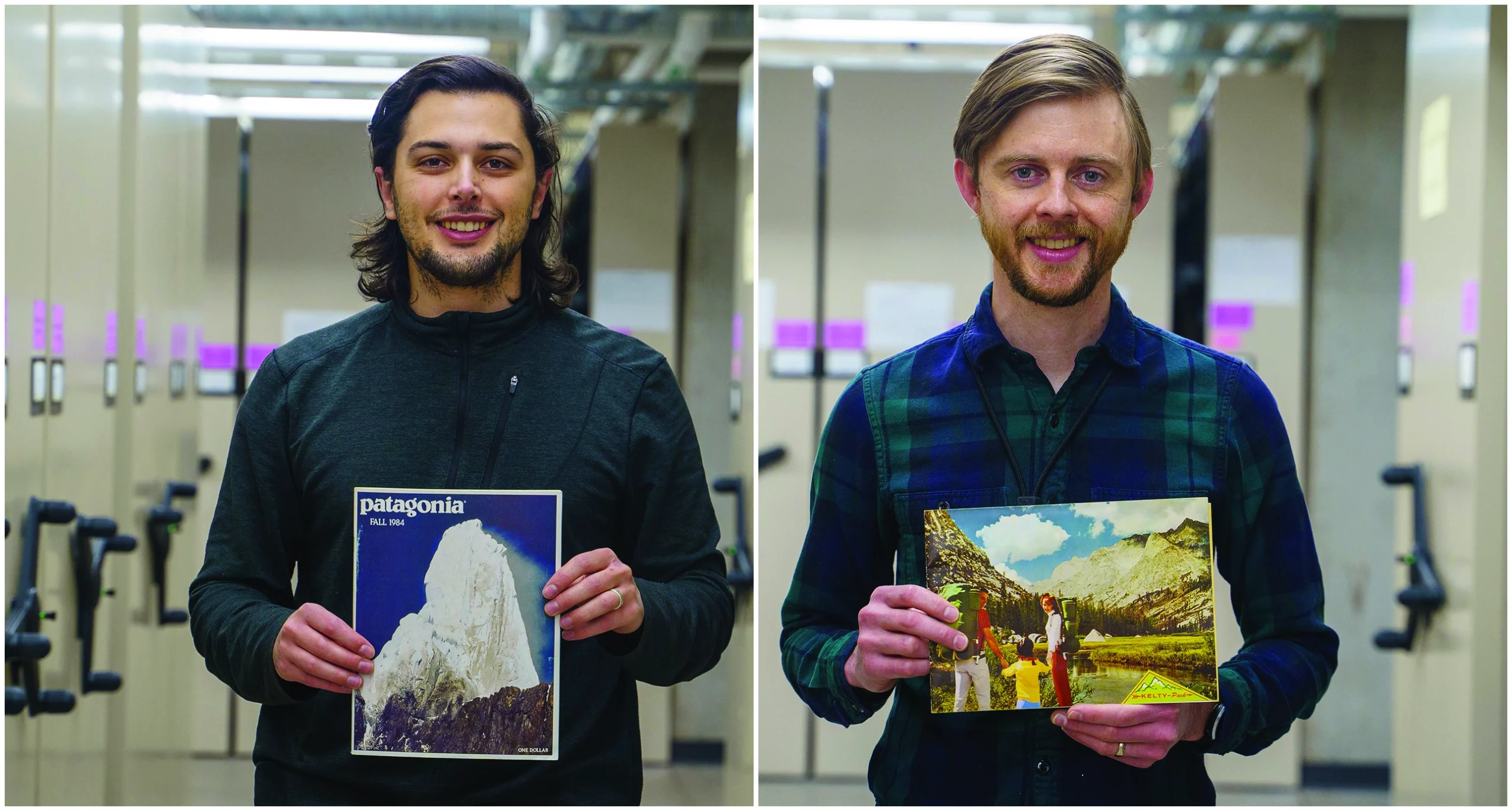
Back to the Future: The Outdoor Recreation Archive and Fish-Ski Designs
Art and Fashion
If you can’t remember the past, you are doomed to repeat the same mistakes. In the early days of the outdoor industry, companies had distinct personalities. Nowadays, if you removed all jacket logos, would you be able to tell the difference in brand? The Outdoor Recreation Archive’s utilization of historical records is fostering a new wave of inspiration, innovation and ingenuity to develop better, more sustainable products.
The Outdoor Recreation Archive started in 2018 at Utah State University in Logan, UT. Clint Pumphrey, Manuscript Curator, manages the school’s historical document collections and Chase Anderson, Project Coordinator for the Outdoor Product Design and Development Program, manages marketing and outreach to share their incredible work and mission.
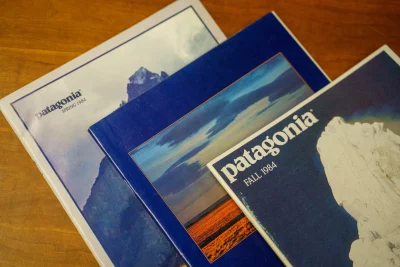
SLUG: How has the Outdoor Recreation Archive been critical in the creation of sustainable product designs?
Anderson: It is helpful to see the products that came before, and things that failed. That perspective helps students focus on designing new things. [They] learn what works and what doesn’t [and] then build on that in a sustainable way.
SLUG: In what ways do you promote and entrench the value of preserving the archives?
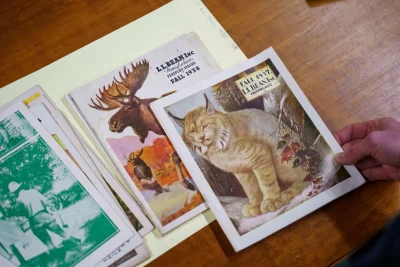
Pumphrey: Until now, nobody has collected and preserved the history of the industry of outdoor products and business to this degree or in one place. Designers and brands come to the archive and it reshapes how they think about the products they create. Not a lot of time is given to reflect on the past. They find inspiration for future collections. The archive helps people not only understand the value of history, but also develop connections between people interested in the industry.
We don’t collect actual gear, not because we don’t want to, but [because] preserving fabric is a whole other skillset. One day we would love to have a space to display and store them, and a lab where the students can see how they are made. That is a longer-term goal. We’ll see, who knows what the future will hold.
SLUG: What are some outcomes and benefits of using archival materials to understand the history of people, products and brands?
Anderson: There is a hunger for new sources of inspiration. This is the first time in decades that this material has been seen. It is exciting to see all the new doors it unlocks for inspiration and industry. We have a book coming out in 2025. This coffee table book of catalog scans will get archives into the hands of people around the world.
It is compelling to see how students interpret the material. When Black Diamond created some design briefs for the students to design, we brought the students to the archive and Clint [Pumphrey] pulled out all [of] the Black Diamond equipment articles. The students studied the evolution of their product line and aesthetics, which leveled up the projects. We show students and the industry why the archive is valuable to their creative process.
Fischer Olpin, a 2021 graduate of USU’s Outdoor Product Design and Development Program, gave me a glimpse into the workshop and creative genius of Fish-Ski Designs. Bursting with colorful, humorous and exuberant character, Fischer and Fish-Ski Designs put the “fun” in functional. You can see and purchase his designs on Instagram at @fish_ski.designs or on his website fish-ski.com.
SLUG: What was it like working with the Outdoor Recreation Archive?
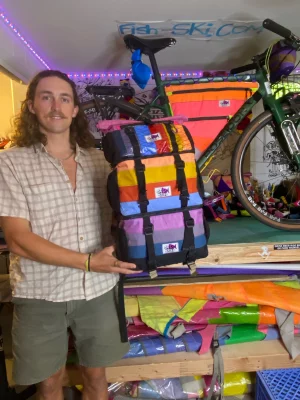
Fischer: The archive started really small. It was fun to see the cool stuff companies sent in and say, “Hey that was a great idea, why didn’t it go further?” Seeing the ‘80s retro colors gave me inspiration and ideas—all fashion circles back around. I still talk to Chase [Anderson] and my professors. I loved the program. The connections this program develops with students has cultivated a great community of creatives. I can message anyone and say, “I am running into this problem—what should I do? Do you know anything about this material? Do you have any connections to this brand?”
SLUG: How has the Outdoor Recreation Archive influenced your product designs?
Fischer: I try to do a lot with sustainability. I work with upcycled materials like these fun, colorful old windsurf sails. I’ve been working with Trek Bicycle, using their vinyl canvas showroom displays because they just threw them away afterwards. I turn them into something that can be used again and again. One man’s trash is another man’s treasure! It is fun to know I am saving something from being thrown away. I get a lot of people reaching out offering old tents—it feels like I am becoming an eclectic trash hoarder in a way. It is a time-consuming cycle to collect and also use to make space for more, especially with limited space.
SLUG: How have you redefined and pushed the boundaries of the outdoor industry?
Fischer: What makes my brand different is that my gear is identifiable from far away by the unique colors and design, not the logo. I really enjoy biking, sewing and creating. I started messing around with Bevvy Carriers, the first product I sold. I’m at the gas station thinking, “How can I store a six-pack on my bike?” At the 999 bike ride, people shove beverages in their pockets or duct tape them to their bikes. I wondered, “Is there a problem here that could be fixed?”
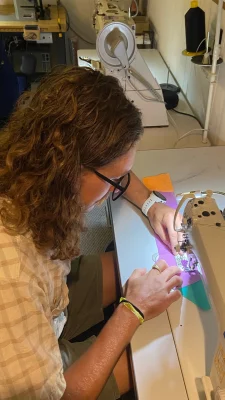
I have so many fun ideas, so I decided to create them and see if people wanted them. The oniGEARi Bag came from a friend who approached me when he was going to Japan and said he wanted a bag to hold onigiri. He took it to Japan and it exploded. It took off so fast. Now it is one of my best-selling products. Every year I make a funny April Fools product. The first year, I dropped Bike Nuts. As soon as they went live, they were gone. People got upset that I didn’t have more, so I started making and selling them. I like creating usable art. I love bringing more fun to the serious biking community. I want to make it more inclusive and get people into biking.
SLUG: What are some of your future goals or plans?
Fischer: I am about to start my YouTube channel with adventure videos and product overviews. It would be great to move out of this basement, to have a small warehouse with giant sewing machines and cutting tables to sustainably ramp up production. Manufacturing in the US and creating a sewing community is important to me.
I would be interested in speaking to students in the program, saying, “I was once in your shoes and this is what I am doing now. It’s possible but it won’t be a cake walk. If it was easy, then everyone would be doing it.” I want to show them you can create fun ideas, bring them into the retail world and make it a company.
Looking back to move forward, the Outdoor Recreation Archive showcases industry pioneers and simultaneously nurtures the next generation of designers. Building this repository connects people and passion, ingraining what makes exploring the outdoors special in the first place. See more from the archive on Instagram at @outdoorrecarchive or on their website library.usu.edu/archives/ora.
Read more from the July Outdoorsy Issue:
Connect To Your Wild Side With Inner Peas Goat Yoga
Great Salt Lake Audubon: Fighting for Free Flight